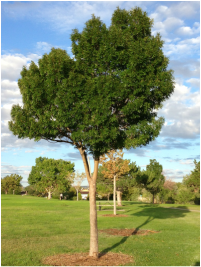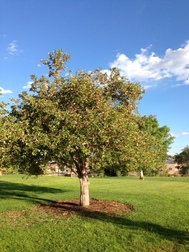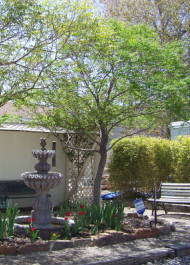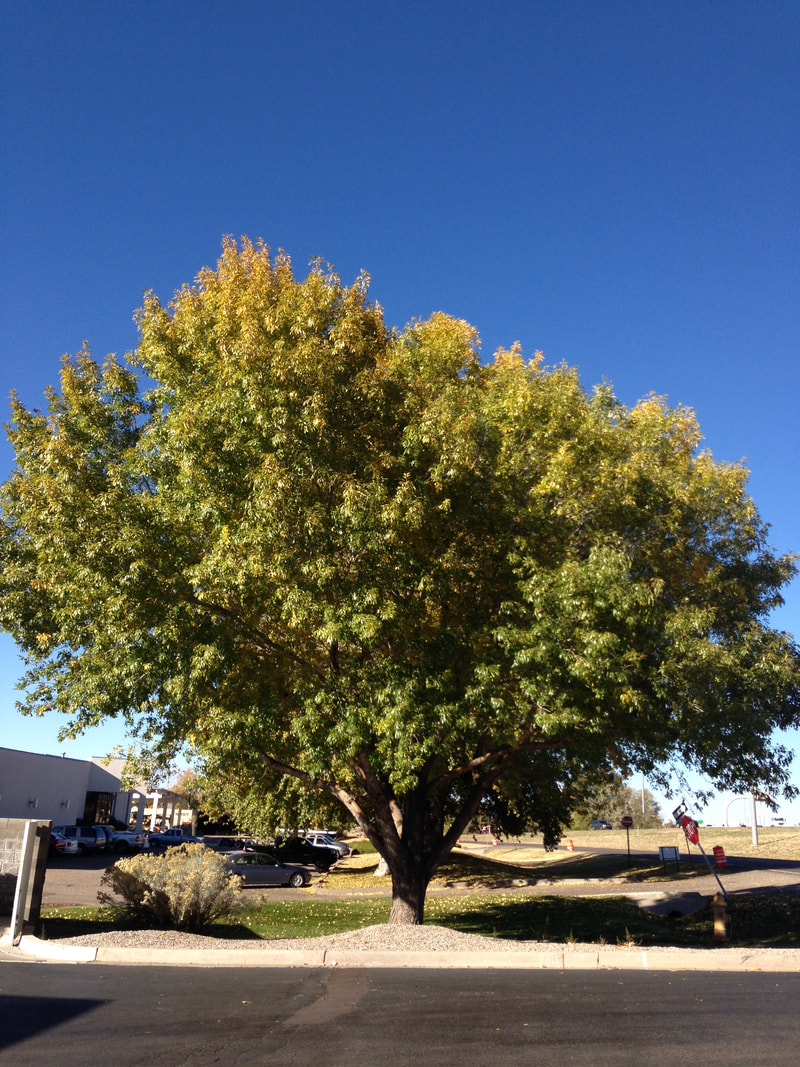Tree and Shrub Care and Information
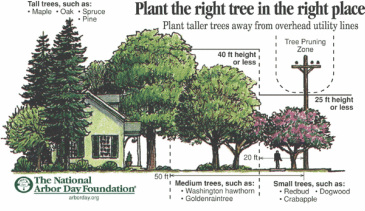
How to choose the right Tree or Shrub
Trees and shrubs significantly enhance curb appeal. Evergreens and drought-resistant plants are particularly beneficial for xeriscaping. Adding these elements can be straightforward, especially with a drip irrigation system to reduce maintenance. When planning your landscape design and considering the installation of trees and shrubs, it's important to assess the planting area. Does it receive full sun or full shade? Is it part of a lawn or a xeriscape? Is it deciduous, meaning it will shed leaves in the winter? Knowing this helps prepare for seasonal cleanup. Consider how often the plants will need trimming. Do you desire flowers, fruit, or colorful foliage? These considerations are crucial when adding trees or shrubs to your landscape. We feature different trees and shrubs at discounted prices each month. Keep checking back to find the one you're interested in. Contact us about our tree and shrub care program to ensure your investment remains healthy and robust.
Trees and shrubs significantly enhance curb appeal. Evergreens and drought-resistant plants are particularly beneficial for xeriscaping. Adding these elements can be straightforward, especially with a drip irrigation system to reduce maintenance. When planning your landscape design and considering the installation of trees and shrubs, it's important to assess the planting area. Does it receive full sun or full shade? Is it part of a lawn or a xeriscape? Is it deciduous, meaning it will shed leaves in the winter? Knowing this helps prepare for seasonal cleanup. Consider how often the plants will need trimming. Do you desire flowers, fruit, or colorful foliage? These considerations are crucial when adding trees or shrubs to your landscape. We feature different trees and shrubs at discounted prices each month. Keep checking back to find the one you're interested in. Contact us about our tree and shrub care program to ensure your investment remains healthy and robust.
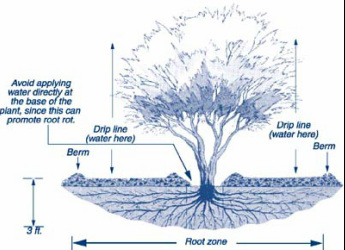
How to Properly Care for your Trees
Trees and shrubs should be watered every 10 to 14 days, ideally moistening the soil to a depth of 3 feet around the root area. To minimize evaporation, maintain mulch around the plant's base. Fruit trees need a regular watering schedule to prevent drought stress, which can stunt growth and diminish flavor. Remember to thin the fruit to prevent branch breakage. Avoid fertilizing trees and shrubs during the hot summer months.
Water deeply and for extended periods, but not necessarily frequently. A thorough soaking with a soaker hose around the perimeter, and at the edge of a tree's canopy, every two weeks is optimal. Watering at the trunk can lead to root rot, contrary to common belief.
The root system reaches out beyond the canopy in search of moisture. To maintain the health of your plants and trees, it's crucial to water them to a depth of 18 to 24 inches. A soaker hose is the most effective tool for this task. It is designed with tiny holes throughout its length, allowing water to be released slowly. This slow release ensures the water has ample time to penetrate deep into the soil, reaching the roots. The advantages of using this watering method include robust roots and flourishing plants with vibrant leaves, stems, and flowers.
To ensure you remember to water your plants, mark it on your calendar. When you begin watering, set a timer to avoid overwatering. Generally, 1-2 hours of slow watering suffices, unless you're dealing with a very large tree. For trees, place the hose approximately two feet from the trunk and gradually move it towards the canopy's edge. It's important to note that the roots extend to the canopy's perimeter. Shrubs require watering around the drip line for a shorter duration. They are often equipped with timers connected to bubblers or drip systems, similar to soaker hoses. If your shrubs appear wilted, check your drip system, especially when temperatures rise.
Trees and shrubs should be watered every 10 to 14 days, ideally moistening the soil to a depth of 3 feet around the root area. To minimize evaporation, maintain mulch around the plant's base. Fruit trees need a regular watering schedule to prevent drought stress, which can stunt growth and diminish flavor. Remember to thin the fruit to prevent branch breakage. Avoid fertilizing trees and shrubs during the hot summer months.
Water deeply and for extended periods, but not necessarily frequently. A thorough soaking with a soaker hose around the perimeter, and at the edge of a tree's canopy, every two weeks is optimal. Watering at the trunk can lead to root rot, contrary to common belief.
The root system reaches out beyond the canopy in search of moisture. To maintain the health of your plants and trees, it's crucial to water them to a depth of 18 to 24 inches. A soaker hose is the most effective tool for this task. It is designed with tiny holes throughout its length, allowing water to be released slowly. This slow release ensures the water has ample time to penetrate deep into the soil, reaching the roots. The advantages of using this watering method include robust roots and flourishing plants with vibrant leaves, stems, and flowers.
To ensure you remember to water your plants, mark it on your calendar. When you begin watering, set a timer to avoid overwatering. Generally, 1-2 hours of slow watering suffices, unless you're dealing with a very large tree. For trees, place the hose approximately two feet from the trunk and gradually move it towards the canopy's edge. It's important to note that the roots extend to the canopy's perimeter. Shrubs require watering around the drip line for a shorter duration. They are often equipped with timers connected to bubblers or drip systems, similar to soaker hoses. If your shrubs appear wilted, check your drip system, especially when temperatures rise.
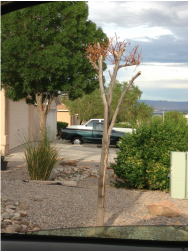
Important things to Consider when Trimming your Trees
There are 3 key factors to consider when getting ready to trim your trees.
Safety
In the windy climate of New Mexico, it is crucial to remove any dead or broken branches. You wouldn't want to discover a tree limb hanging dangerously over your car when you're rushing to work. Regularly inspect your tree branches to determine if your trees or shrubs have these problems. It's simpler to identify issues before the leaves fall if you have a deciduous tree. For evergreens, check for insects and branches that aren't producing new growth, as they may require pruning or treatment.
Health
Many believe that cutting all major branches down to nubs, commonly known as tree topping, is beneficial. However, this practice actually harms the tree. A better approach is to prune crossing or rubbing branches and thin out some central branches to improve airflow, which helps prevent strong winds from toppling the tree. (A dense tree acts like a sail, catching the wind.) It's advisable to trim healthy branches during the tree's dormant period to avoid sap dripping. This advice comes from personal experience; cleaning sap from a vehicle is no easy task.
Aesthetics
Trimming is not just maintenance; it's about aesthetics too. It's akin to getting a haircut to keep the ends tidy. It's important to trim branches in a manner that improves the tree's appearance. For branches that are low-growing or drooping, you can influence the tree or shrub's growth by carefully planning where to make your cuts.
There are 3 key factors to consider when getting ready to trim your trees.
Safety
In the windy climate of New Mexico, it is crucial to remove any dead or broken branches. You wouldn't want to discover a tree limb hanging dangerously over your car when you're rushing to work. Regularly inspect your tree branches to determine if your trees or shrubs have these problems. It's simpler to identify issues before the leaves fall if you have a deciduous tree. For evergreens, check for insects and branches that aren't producing new growth, as they may require pruning or treatment.
Health
Many believe that cutting all major branches down to nubs, commonly known as tree topping, is beneficial. However, this practice actually harms the tree. A better approach is to prune crossing or rubbing branches and thin out some central branches to improve airflow, which helps prevent strong winds from toppling the tree. (A dense tree acts like a sail, catching the wind.) It's advisable to trim healthy branches during the tree's dormant period to avoid sap dripping. This advice comes from personal experience; cleaning sap from a vehicle is no easy task.
Aesthetics
Trimming is not just maintenance; it's about aesthetics too. It's akin to getting a haircut to keep the ends tidy. It's important to trim branches in a manner that improves the tree's appearance. For branches that are low-growing or drooping, you can influence the tree or shrub's growth by carefully planning where to make your cuts.
Here are some examples of the various shapes that healthy, well-trimmed trees can take, in contrast to the tree mentioned earlier which has been poorly topped, resulting in a split trunk. Unfortunately, that tree could not be salvaged.
